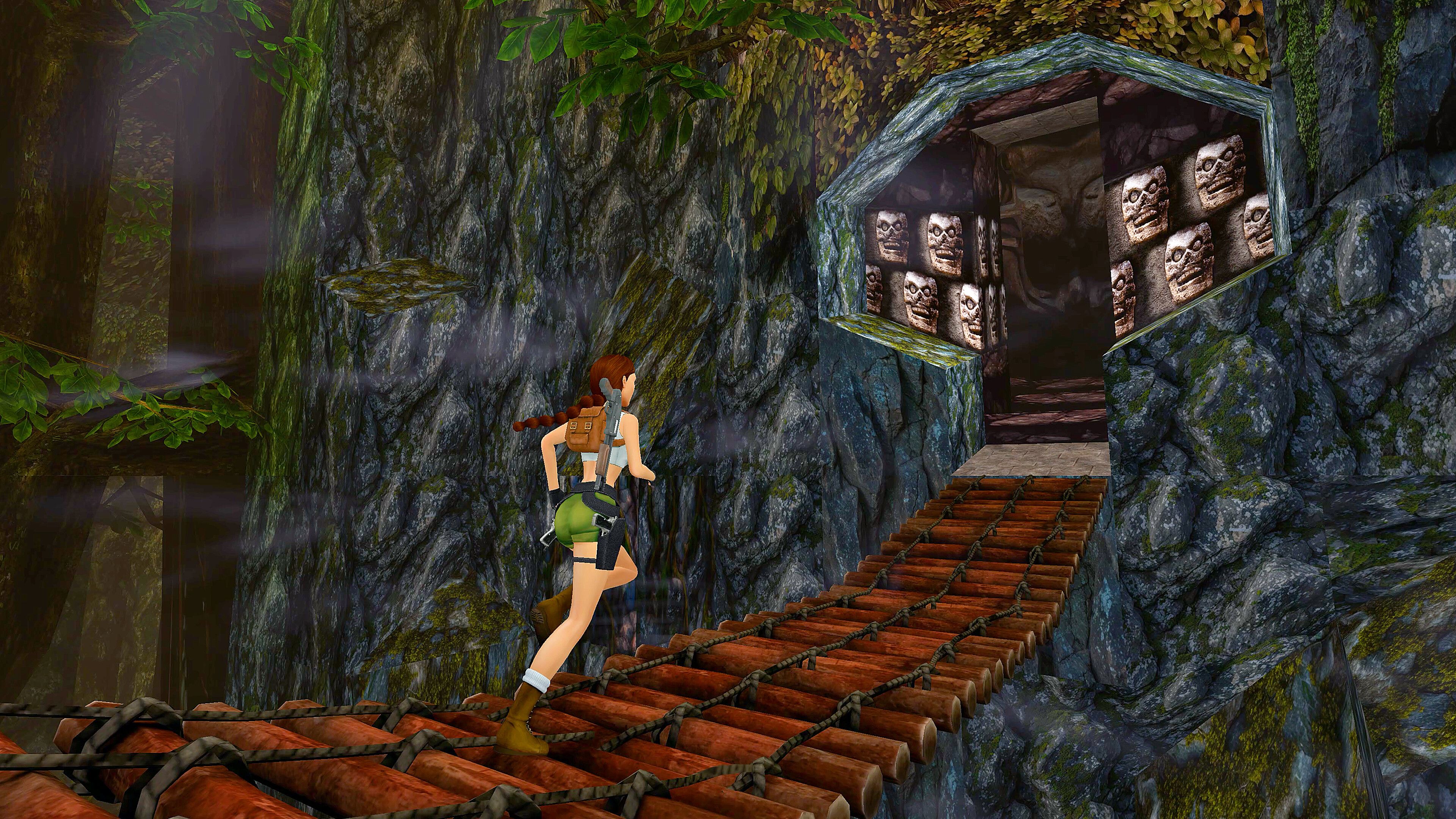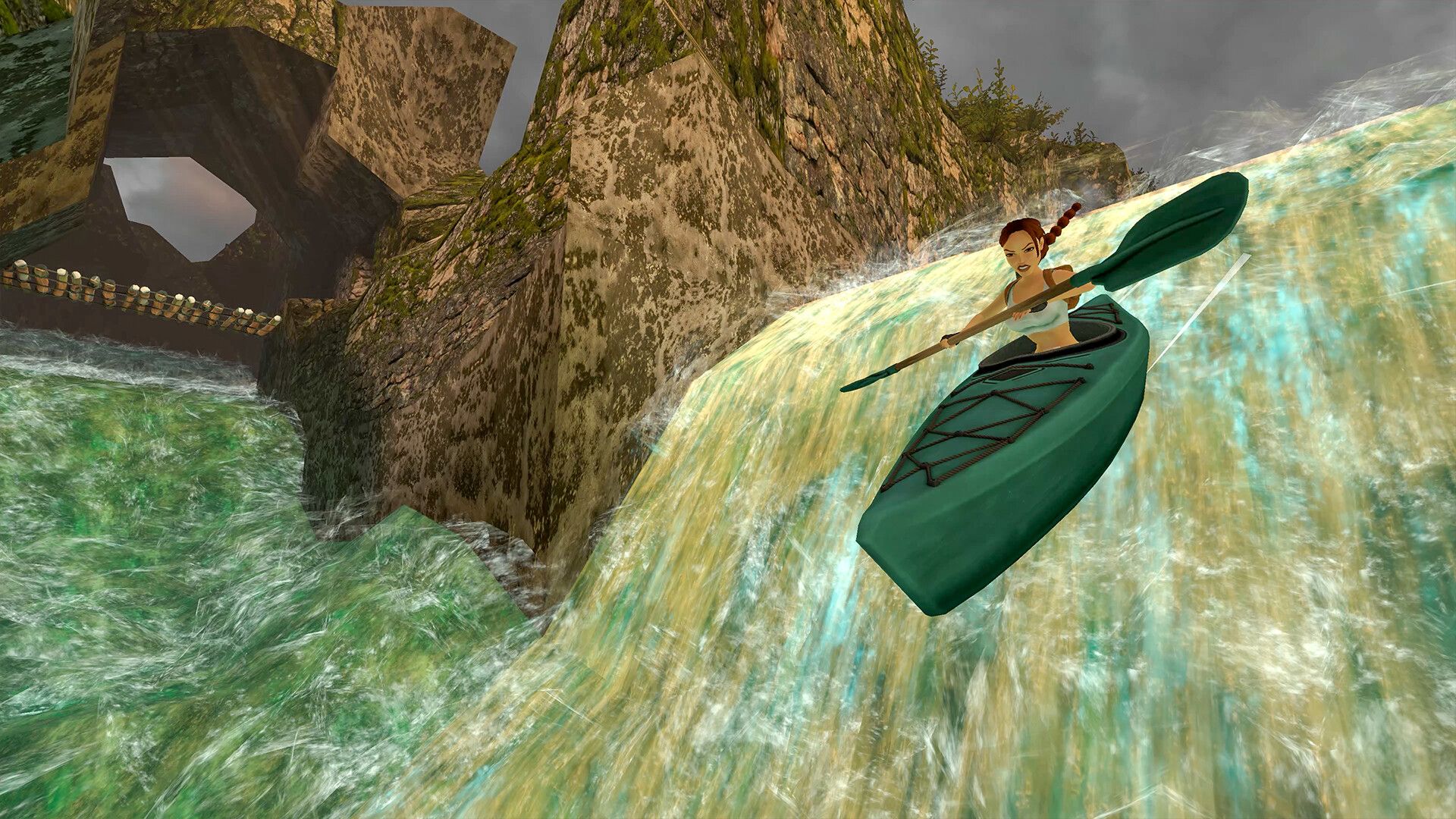The technological progression of video games has plateaued in recent years. Every new generation used to mark exactly that – a generational jump in visuals, mechanics, and capabilities in the games we loved to play. By offering developers more powerful hardware, more impressive games could be made. For decades, we watched the medium evolve from basic sprites to three-dimensional behemoths bordering on photorealism. Now we’ve found ourselves at a standstill, improving on minor details and loading times instead of pushing video games forward like we used to.
We were always going to get to this point, where the medium now finds itself in an unsustainable position of ballooning budgets and prolonged production pipelines. This brings us to Tomb Raider Remastered, a trilogy of classic games brought back to life by Aspyr with a surprising level of faithfulness. The original visuals and controls are intact, and can even be switched to at the touch of a button if you want to relive the original versions. They hold up reasonably well, and there has been a deliberate effort to keep some of its rustier elements intact. For better or worse, this is what Tomb Raider used to be, and the milestone it once represented is well worth preserving.
It’s even more surreal to look back at the cadence of video games prior to the original Tomb Raider’s release. Originally developed by CORE design before the British studio went under after Angel of Darkness failed to impress, the studio developed a consistent rhythm for Lara Croft, with a new game arriving every year from 1996 to 2003. Games were cheaper and easier to make back then, while the infancy of 3D technology meant many of the rules we take for granted today were still being established. In many ways, the development team was laying the track as it went, encountering and figuring out solutions to problems that hadn’t existed before. It’s why Tomb Raider was so influential, billed as the Indiana Jones of the medium long before Nathan Drake came along and reinvented the wheel all over again.
Tomb Raider was put on ice until Crystal Dynamics picked up the mantle in 2006 with the release of Legend, going onto produce several new games that iterated on the formula but never really strayed away from it. At this point, Naughty Dog released the first two Uncharted games and proved that the once innovative gameplay underpinning Tomb Raider was sorely outdated, and needed to change.
The Survivor Trilogy, as predicted, sought to expand upon the Uncharted formula with a trio of titles. They placed a focus on Lara growing from a timid student to a hardened fighter that is forced to kill in order to survive, going through comically morbid ordeals like being impaled on spikes, eaten alive by bears, and killing more people than most serial killers in history. It was a tonal nightmare, but the games were largely enjoyable, and did a stunning job translating Lara Croft’s hobbies of temple spelunking and animal cruelty into a modern context.

However, each game took years to make, and Square Enix continually said that they hadn’t sold enough to justify the time and money that went into making them. It wanted more, but the evolution of the industry and how games are created has made this greed impossible to satiate. Whatever Tomb Raider has planned next, it’s not entirely clear if it will be a follow-up to the previous trilogy, or yet another reboot, nor do we know when it’ll break cover.
This brings us back to Tomb Raider Remastered, the vintage package of Lara Croft epics which were originally released within the space of three short years. That timeline doesn’t make sense in 2024, because we have allowed the triple-A video games industry to prioritize visuals ahead of mechanics, preferring to watch budgets grow as its workers are taken advantage of instead of taking a step back and looking at what could possibly be salvaged.

As I play through these games for the first time in decades, I can’t help thinking about how we’ve increasingly come to focus on fulfilling our own nostalgia without thinking about how we can ensure a sustainable future. Not just for Tomb Raider, but every property that was firstborn in the early ages of 3D and persists to this day. We used to be able to lay track during the course of development, but now we’re headed towards a cliff with little to show for it.






